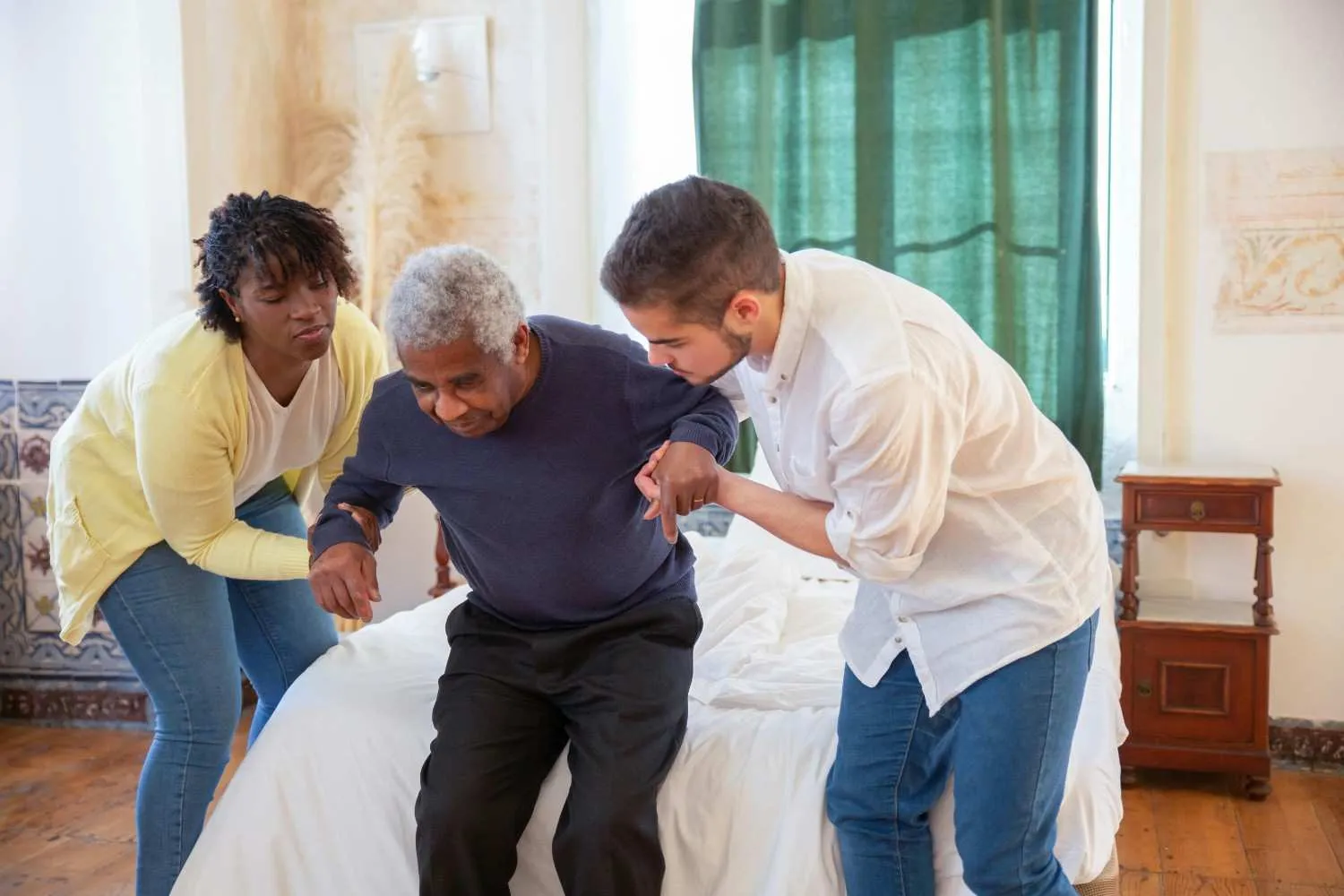If you're in the third trimester of your pregnancy and feeling confused about whether the pain you're experiencing is real or just Braxton Hicks contractions, you're not alone. Many expectant mothers find it challenging to differentiate between the two.
That's why this complete guide on "What do contractions feel like?" will be a helpful resource for you. From the stages of labor to pain management techniques, this blog covers everything you need to know about what contractions feel like and how to prepare for them.
Also Read: Epidural Anesthesia - Manage Labor Pain
 So many factors can result in contraction while pregnant, and many of these can feel like contraction differently. It can also be different from person to person. Some can have less but more intense concentration, while others can have less severe but more interaction. There is no sure way of telling what a contraction feels like, and there can be some pointers that can help in coping with the contraction and seeking information and can speak with the midwife to get in touch with the expert careline team.
Labor contraction can be the physical way the uterus can tighten to promote the baby's delivery, and all the muscles can tighten or shorten when used. The uterus is one of the muscles in the body that is the strongest.
So many factors can result in contraction while pregnant, and many of these can feel like contraction differently. It can also be different from person to person. Some can have less but more intense concentration, while others can have less severe but more interaction. There is no sure way of telling what a contraction feels like, and there can be some pointers that can help in coping with the contraction and seeking information and can speak with the midwife to get in touch with the expert careline team.
Labor contraction can be the physical way the uterus can tighten to promote the baby's delivery, and all the muscles can tighten or shorten when used. The uterus is one of the muscles in the body that is the strongest.
What Do Contractions Feel Like?
 So many factors can result in contraction while pregnant, and many of these can feel like contraction differently. It can also be different from person to person. Some can have less but more intense concentration, while others can have less severe but more interaction. There is no sure way of telling what a contraction feels like, and there can be some pointers that can help in coping with the contraction and seeking information and can speak with the midwife to get in touch with the expert careline team.
Labor contraction can be the physical way the uterus can tighten to promote the baby's delivery, and all the muscles can tighten or shorten when used. The uterus is one of the muscles in the body that is the strongest.
So many factors can result in contraction while pregnant, and many of these can feel like contraction differently. It can also be different from person to person. Some can have less but more intense concentration, while others can have less severe but more interaction. There is no sure way of telling what a contraction feels like, and there can be some pointers that can help in coping with the contraction and seeking information and can speak with the midwife to get in touch with the expert careline team.
Labor contraction can be the physical way the uterus can tighten to promote the baby's delivery, and all the muscles can tighten or shorten when used. The uterus is one of the muscles in the body that is the strongest.
- The labor or contraction during delivery can
- Radiate from the back to the ton core
- Make the whole belly rock
- Include pelvic pressure
- Include a dull backache
What causes a contraction?
One can feel that contraction, when a hormone called oxytocin can be released, and that can be associated with the womb of the mother, and there is a hardening or tightening of the worm that makes it possible to push the baby out and down the cervix and encourage it to open the vagina. Read Also: Should You Trust Home Pregnancy Tests?How do these contractions work?
Contraction can help move the baby downwards into the cervix by tightening the uterus and applying pressure on the cervix. These pressures can cause the cervix to open and dilate. Contraction can last anywhere from a few seconds to free minutes, and this can also lead to the stimulation of labor contraction and will keep them happening. Labor progress can unusually get more intense and longer when these come together. Sometimes there can be contractions that are less frequent once you have pushed the baby out, and they will be vital to work with the baby out. Also Read: Period Cramps vs Early Pregnancy CrampsWhen do contractions start?
For the entire term of pregnancy, the contractions can start from 37 weeks and there can be experienced earlier preterm contraction for preterm deliveries. Therefore, Chase can signify going into labor before the baby fully develops. You can also feel the Braxton hicks when you are in the second term of pregnancy, and they are believed to prepare the body for labor, and these generally won't last long and are not that painful. Contraction does not necessarily mean that you will deliver the baby, and the contraction a few days before delivery is a promotional labor contraction. Read Also: How Much Weight Should You Normally Gain During Pregnancy?How to check if the contraction can cause labor?
It can be challenging to chisel off the contraction and can cause labor, but some signs can be a contraction, round ligament, or pain in indigestion, especially if you are a first-time mom. People can feel if they are having real or false contractions, and you can, too, if you think there can be regular patterns and irregular contractions.How to cope with contractions?
- During the first stage of the above, there can be contractions with irregular variations in frequency and duration.
- This can be likely to be able to stay at home and can vary with the length of downtime.
- There are many ways of managing discomfort at home.
- Having a warm bath, drinking water, and massaging the area to help relieve the pain and breathing techniques can be learned in the antenatal classes and will be helpful to and for a more high-tech solution.
- This is called the TENS machine; this is a clever device attached to the sticky pad attached to the stomach and can help to breathe practice.
Conclusion-
While contractions are widespread for females as they have undergone them through their other life-suffering periods but during delivery, the intensity of contractions is higher than one imagines. So, whether you're a first-time mom or have been through labor before, it can confuse you "What do contractions feel like? Thus, it is essential to know how continuation feels during pregnancy; therefore, we have written this blog for your convenience on how contractions feel. They feel like waves of contraction in the uterus or the tightening of the uterine walls and relaxation in the uterine walls.Frequently Asked Questions
What do contractions feel like?
The contraction can feel like cramps and can be in the lower abdomen of the stomach and start developing like period pain.
How to know if I have a contraction?
A contraction can feel like uterus muscles tightening up, and relaying this can help push the baby out.
What is a sign of approaching labor?
The signs can be cramps, pelvic pressure, and contractions.
Will the baby move during contraction?
Yes, the contraction during delivery can result in the baby's movement.
Where can one feel the bump during a contraction?
One can feel the bump in the tight band on top of the womb, which can feel like externally placing the hand on the spot.

Reviewed by







